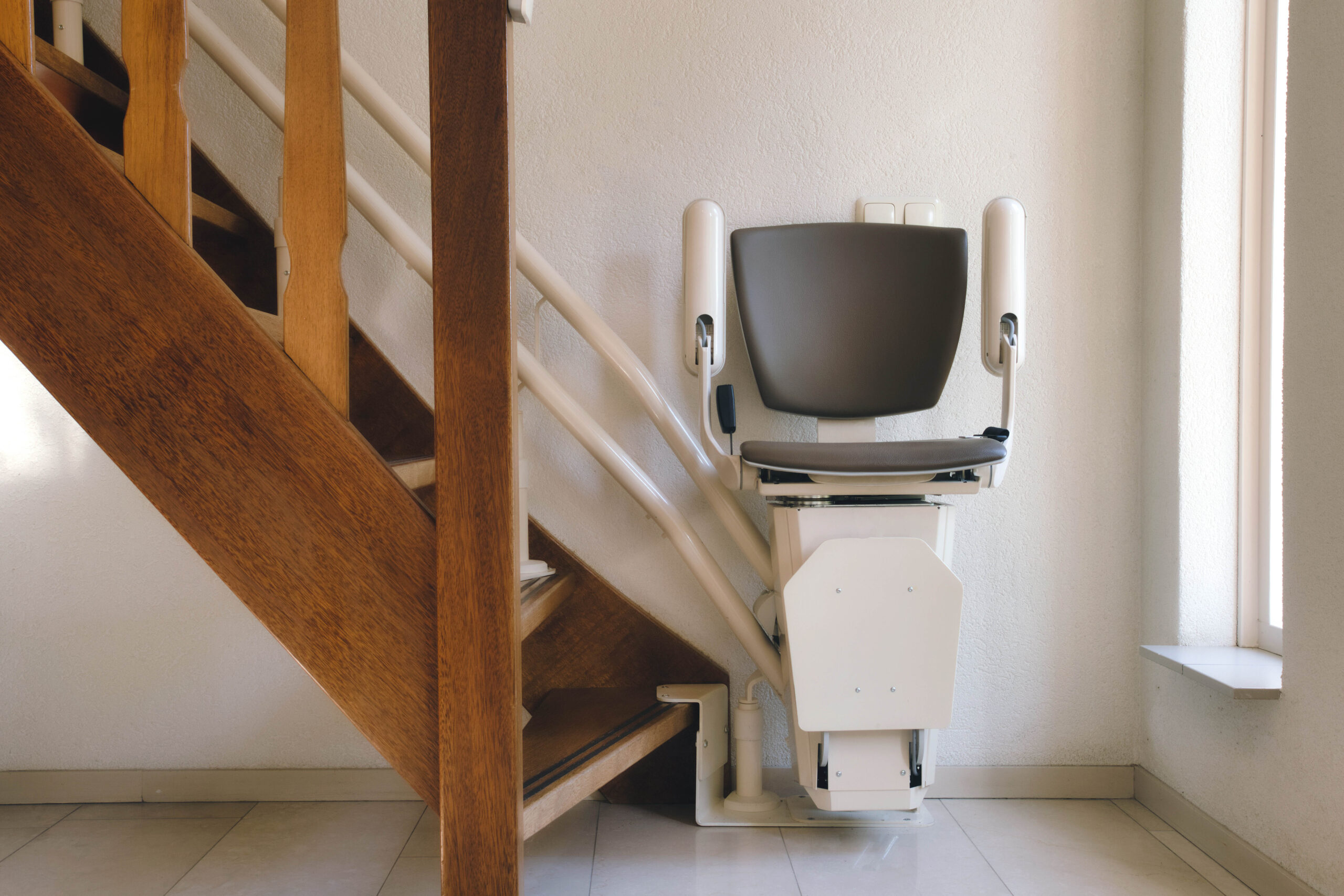Lift Chairs: How Medicare May Help Cover the Cost
Updated: Apr 19, 2025
A lift chair can be a life-changing tool for people with mobility issues, offering a comfortable way to sit and stand independently. Explore how Medicare may help cover the cost of a lift chair, making it an affordable option to improve daily living.

Lift chairs look and function like regular recliners but include a motorized lifting mechanism that assists users in transitioning from a sitting to a standing position. For people with limited mobility, a lift chair can reduce strain, improve safety, and offer more independence at home. Medicare Part B may cover part of the cost of a lift chair if it’s medically necessary. In this guide, we’ll explain how Medicare coverage works for lift chairs, eligibility requirements, and steps to take to secure coverage.
What Is a Lift Chair and How Does It Work?
A lift chair combines comfort with mobility assistance. It resembles a standard recliner but includes a powerful lift mechanism that gently tilts the seat and raises the user to a standing position with the push of a button. Lift chairs come in different styles, with options for reclining positions, heated seats, and massage functions.
- Two-Position Lift Chairs: Recline to about a 45-degree angle, suitable for sitting and relaxing.
- Three-Position Lift Chairs: Recline to a near-flat position for napping.
- Infinite-Position Lift Chairs: Fully recline for sleeping and offer independent control of the backrest and footrest.
Medicare covers only the lifting mechanism within the chair, not the full cost of the chair itself. However, this can significantly reduce the overall expense of a lift chair.
How Does Medicare Cover Lift Chairs?
Medicare Part B, which covers durable medical equipment (DME), may provide partial coverage for lift chairs if certain conditions are met. The coverage only applies to the motorized lift mechanism within the chair and does not cover the chair itself.
Here’s how Medicare coverage for lift chairs generally works:
- Medicare Part B Coverage: Medicare covers 80% of the cost of the motorized lifting mechanism after you meet the Part B deductible. You are responsible for 20% of the Medicare-approved amount and any additional costs for the chair’s non-covered features.
- Medicare Advantage: If you have a Medicare Advantage (Part C) plan, it may cover lift chairs similarly to Original Medicare, though coverage details may vary. Some Advantage plans offer additional benefits beyond Original Medicare, so check with your provider.
Eligibility Requirements for Medicare Coverage
To qualify for Medicare coverage of a lift chair’s lifting mechanism, certain criteria must be met:
- Medical Necessity: Medicare requires that the lift chair be medically necessary for your condition. Your doctor must certify that you need the chair due to severe arthritis in the hip or knee, or another condition that affects your mobility.
- Ability to Operate the Chair: You must be able to operate the lift mechanism independently or with minimal assistance once you’re in a standing position.
- Inability to Stand Without Assistance: Medicare requires proof that you cannot stand from a regular chair without help. A lift chair must be deemed necessary for safe standing and sitting.
- Doctor’s Prescription: A written prescription from your doctor is essential to Medicare approval, as it certifies your need for the lift chair.
It’s important to note that Medicare will only cover lift chairs purchased from suppliers enrolled in Medicare.
Steps to Get a Lift Chair Covered by Medicare
Securing Medicare coverage for a lift chair involves several steps, so planning ahead is essential. Here’s how to get started:
1. Get a Doctor’s Prescription
Speak with your doctor about your mobility challenges and discuss whether a lift chair is appropriate. If your doctor agrees, they’ll write a prescription for the lift chair’s lifting mechanism.
2. Request a Certificate of Medical Necessity (CMN)
Your doctor may also need to complete a Certificate of Medical Necessity (CMN), which provides Medicare with documentation of your condition and why a lift chair is necessary. This form includes medical information that Medicare will review before approving coverage.
3. Find a Medicare-Approved Supplier
Only purchase your lift chair from a supplier that participates in Medicare’s DME program. Medicare-approved suppliers bill Medicare directly for their portion of the cost, making it easier for you to manage your out-of-pocket expenses. The supplier can help you select a chair with a qualifying lifting mechanism.
4. Submit a Prior Authorization Request (if necessary)
Some Medicare suppliers may require a prior authorization to ensure that all documents are in order before delivering the chair. This process helps reduce the risk of denied claims or unexpected charges.
5. Pay Your Share of the Cost
After Medicare approves your lift chair, Medicare will pay 80% of the cost of the lifting mechanism. You are responsible for the remaining 20% and any additional cost for the chair itself, as Medicare only covers the lifting device. If you have supplemental insurance, it may help cover this remaining cost.
Types of Lift Chairs Covered by Medicare
Medicare’s coverage is limited to the lift mechanism, so the types of chairs available are often based on your budget and medical needs. Here are some popular styles that Medicare recipients commonly choose:
-
Two-Position Lift Chairs: These recline to a semi-upright position and are usually more affordable. They’re ideal for sitting and relaxing but may not be suitable for long naps or sleeping.
-
Three-Position Lift Chairs: These models offer more versatility, reclining to a near-flat position for resting. They are a good choice for users who need a comfortable chair for napping as well as mobility support.
-
Infinite-Position Lift Chairs: These chairs provide a full range of motion, including a flat, bed-like position. They are usually the most expensive but offer maximum flexibility for those who need the ability to fully recline and adjust their position independently.
Real-World Examples of Medicare-Covered Lift Chairs
Here are some examples of lift chairs that are popular with Medicare recipients. Remember, Medicare only covers the lifting mechanism, not the full chair.
1. Pride Mobility Heritage Collection LC-358
- Type: Three-position lift chair
- Features: Smooth lift-and-tilt mechanism, supportive backrest, and overstuffed armrests
- Price Range: $700–$900
- Medicare Coverage: Medicare will pay 80% of the lifting mechanism cost after meeting the deductible.
Best For: Individuals who need a basic lift chair for safe sitting and standing and who want comfort for lounging or light napping.
2. Golden Technologies Comforter PR-510
- Type: Infinite-position lift chair
- Features: Full recline, built-in lumbar support, extended footrest, and a wide range of color options
- Price Range: $1,200–$1,500
- Medicare Coverage: Medicare covers the cost of the lifting mechanism, reducing the out-of-pocket cost.
Best For: Those who require more positioning options, such as lying flat or elevating legs, and need a highly adjustable chair for extended comfort.
3. Med-Lift 5555 Full Sleeper Lift Chair
- Type: Infinite-position lift chair
- Features: Full reclining capability for sleeping, durable fabric, and adjustable backrest and footrest
- Price Range: $1,100–$1,400
- Medicare Coverage: Medicare helps cover the lifting mechanism, but the user pays for the reclining features.
Best For: People looking for a lift chair that can function as a bed alternative and who need more robust support for sleep and relaxation.
Other Financial Assistance Options for Lift Chairs
If Medicare only partially covers your lift chair or you don’t qualify, there are other financial resources you may consider:
- Medicaid: Some state Medicaid programs offer additional DME coverage, which may include the full cost of a lift chair. Contact your state’s Medicaid office to learn about local options.
- Veterans Affairs (VA): The VA may provide coverage for lift chairs for veterans with mobility issues. Check with your local VA office to determine if you qualify.
- Supplemental Insurance (Medigap): If you have a Medigap plan, it may cover the remaining 20% of the lift mechanism cost that Medicare doesn’t cover.
- Nonprofit Organizations: Charities and nonprofits like the Muscular Dystrophy Association, United Way, and National Council on Aging may offer grants or financial assistance for lift chairs.
Tips for Choosing the Right Lift Chair
When selecting a lift chair, consider the following factors to ensure you get a model that meets your needs:
- Size and Fit: Choose a chair that matches your height and weight, as well as the dimensions of your living space. A good fit is essential for comfort and ease of use.
- Fabric and Durability: Lift chairs come in a variety of materials, such as microfiber, leather, and vinyl. Choose a fabric that’s comfortable, durable, and easy to clean.
- Additional Features: While Medicare only covers the lift mechanism, some models come with heating, massage, and storage options. Weigh the cost of these features to determine if they’re worth the investment.
- Warranty and Service: Look for a chair with a solid warranty, especially on the lift mechanism and motor. Reliable customer support and repair services are essential for a device that will get daily use.
Conclusion
A lift chair can improve quality of life by making it easier to sit and stand independently. For individuals with mobility limitations, Medicare Part B may help cover the cost of the lift mechanism, making it more affordable to bring home a lift chair that meets your needs. By understanding Medicare’s coverage rules, working with your doctor, and choosing a Medicare-approved supplier, you can make the most of your coverage and enjoy the benefits of a lift chair. Whether you need a basic two-position chair or a fully reclining model, finding the right lift chair can make all the difference in your daily comfort and independence.

